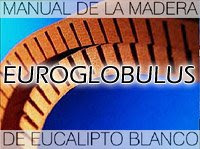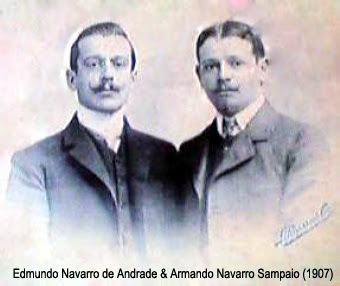We have seen previously here in
EUCALYPTOLOGICS examples of
Eucalyptus Giants both
in Europe and
in Australia surviving as
heritage trees, and followed the development of the
Eucalyptus Atlantic rainforest in Europe from a botanical rarity to a major timber resource. But meanwhile all this was slowly happening, a major figure was to emerge from the rich soils of Brazil. Before him the industrial uses of the ubiquitous Australian trees overseas had known of the
failure of Californian expectations. After him
Eucalyptus forestry in America but also in the world would change forever. What he successfully started a hundred years ago was to be followed for decades by foresters and silviculturalists in four continents. He was
o plantador de eucaliptos.
The Eucalyptus planter. The man of
A Paulista.
Eucalyptus paulistana.
1820's - First mentions on
Eucalyptus being planted in Brazil as botanical rarity.
1897 - Navarro de Andrade sets foot on the
School of Agronomy at Coimbra (Portugal), in the neighbourhood of the
Karri Knight and the
first sizeable Eucalyptus plantations in Europe.

1903 - Navarro de Andrade arrives back in Brazil. In some months he would be in charge of forestry experiments and
silvicultural research for Paulista Railways at Jundiaí Forest Garden.
1906 - Navarro de Andrade completes the planting of
32000 eucalypts at Jundiaí to compare their growth and industrial potential for short cycle timber production against 8000 native Brazilian trees.
Eucalyptus won.

1909 - Navarro de Andrade starts
mass planting of industrial Eucalyptus crops at Río Claro to provide fuelwood, sleepers and poles for Paulista Railways. The experience on the 2200 ha of Rio Claro would spread on over 20 extra massive plantings along the main lines of this railroad in order to create a local supply of firewood/charcoal for steam locomotives.
 1910 -
1910 - Four
Eucalyptus specimens leave the Paulista nurseries at Rio Claro and are planted among dozens of thousands more. But these have a certain significance. Fifteen years later they will travel as wood logs with Navarro de Andrade to the United States to be processed experimentally into a pulp of cellulose first and further into high quality printed paper,
pioneering the birth of a short fibre Brazilian Eucalyptus based Cellulosic Pulp & Paper Industry.

1913 - Navarro de Andrade visits
Joseph Henry Maiden in Sydney during a world tour.
Eucalyptus planter and
Eucalyptus botanist talk on their favourite trees. Edmundo is gifted by
J. H. Maiden with plates from the
Herbarium of New South Wales and provided with seeds of over 150 additional
Eucalyptus species to the ones he had already trialled.

1916 - Building of
Museu do Eucalipto starts at Rio Claro to store the vast amounts of knowledge being generated by Navarro de Andrade, plus artifacts and samples of all products derived from
Eucalyptus trees. Nowadays known as the
Eucalyptus Museum "Navarro de Andrade", it is unique in the world.
 1928 -
1928 - Navarro de Andrade receives the
Medaille de St. Hilaire and the
Grande Medaille Hors Classe on behalf of
Companhia Paulista de Estradas de Ferro from the
Société Nationale d'Acclimatation de France.

1941 - Navarro de Andrade receives the
Frank N. Meyer Medal for Plant Genetic Resources from the
American Genetics Association. He would pass away some months later leaving the impressive legacy of
24 million planted eucalypt trees. If not more.
1942 - Edmundo's nephew,
Armando Navarro Sampaio, continues the work on
Eucalyptus cultivation and starts
genetic improvement protocols following the footprints and legacy of his uncle. Soon Brazilian railroads would stop using eucalypt charcoal for power generation and start using eucalypt poles to build the newer electrified lines, but steel factories were to continue demanding their timber for energy generation purposes until nowadays. At the same time one of the major
Eucalyptus pulp and paper industries in the world started to develop.

2007 - More than
4 billion Eucalyptus trees of over 150 species grow in the different climates of Brazil. Just a handful of them are prevalent but they have become a strategic timber resource of such a magnitude that whatever happens within this
Eucalyptus Agricultural Superpower has a global impact.
Want to follow Andrade's footprints?
Recommended reading
Acknowledgements
To Ralph Mennuci Giesbrecht for his perseverance in the divulgation of history of Brazilian railroads, to Augusto Martini for his perserverance in the fight for preservation of Edmundo's legacy and to Celso Foelkel for his perserverance in the divulgation of Eucalyptus knowledge worldwide. And of course, to Edmundo, wherever he is, for daring. I heard the first thing he asked St. Peter to was "¿entao caro senhor, há algum horto ou jardim con eucaliptos no ceu?".
 GIT's Eucalyptology Topics
GIT's Eucalyptology Topics Subscribe to receive EUCALYPTOLOGICS via RSS
Subscribe to receive EUCALYPTOLOGICS via RSS
© 2007 Gustavo Iglesias Trabado. Please contact us if you want to use all or part of this text and photography elsewhere. We like to share, but we do not like rudeness.

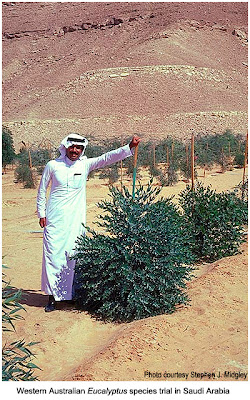





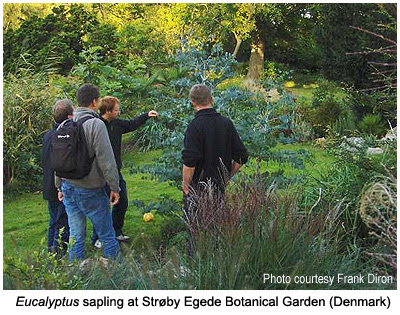



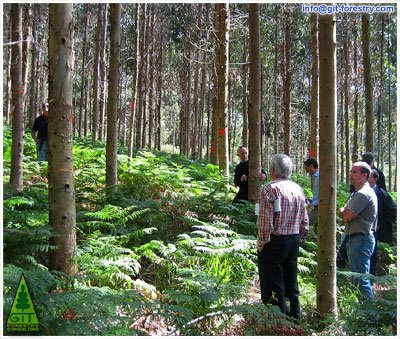



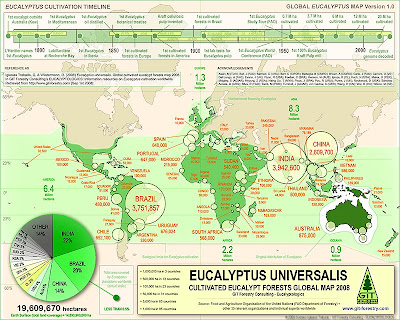
Subscribe to receive EUCALYPTOLOGICS via RSS







